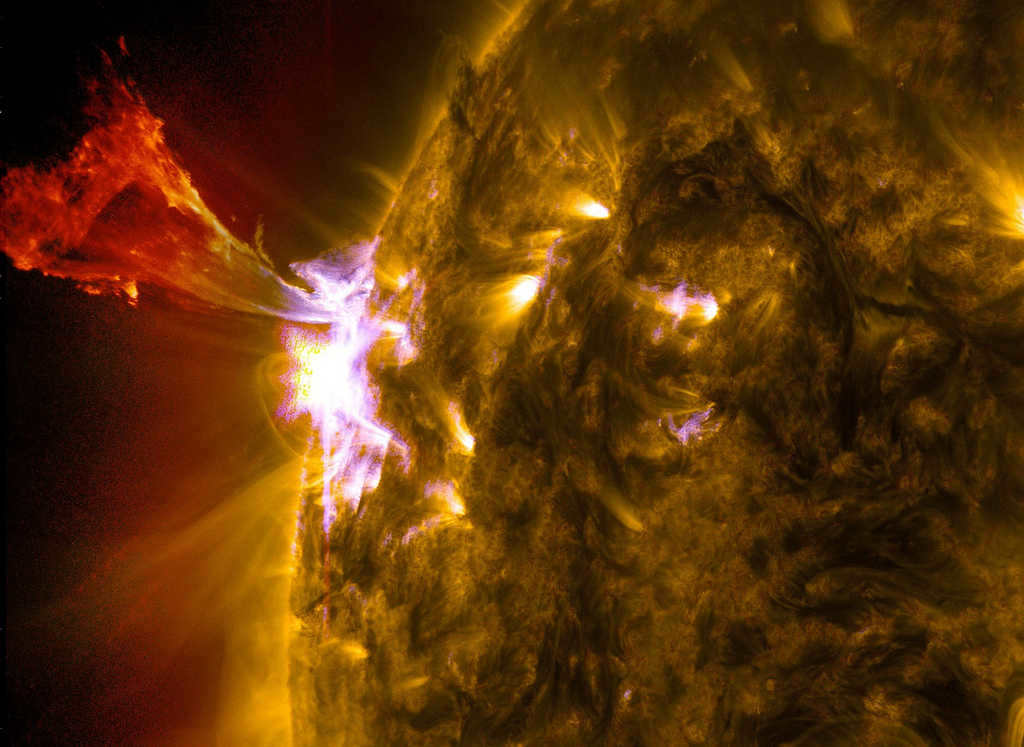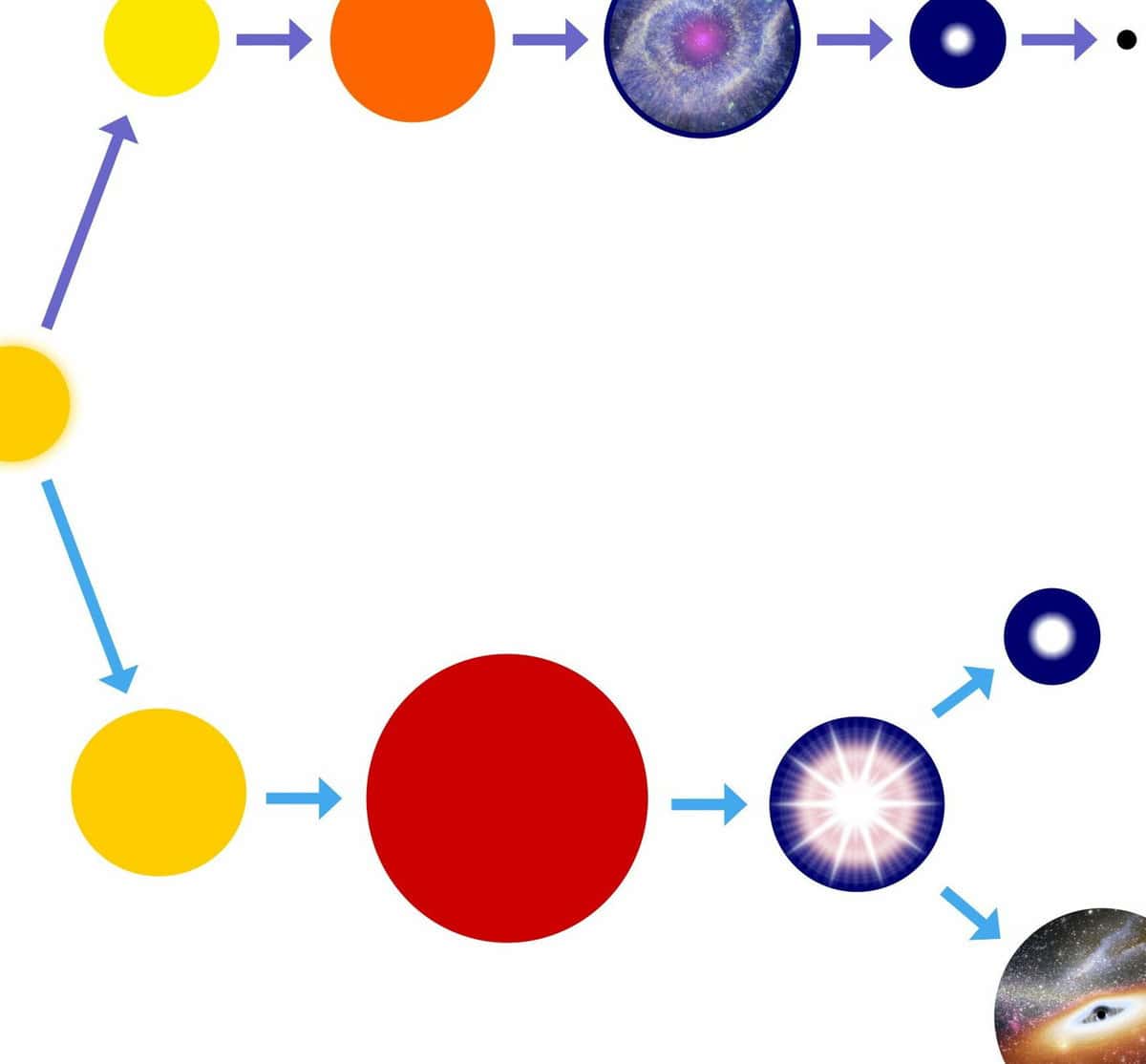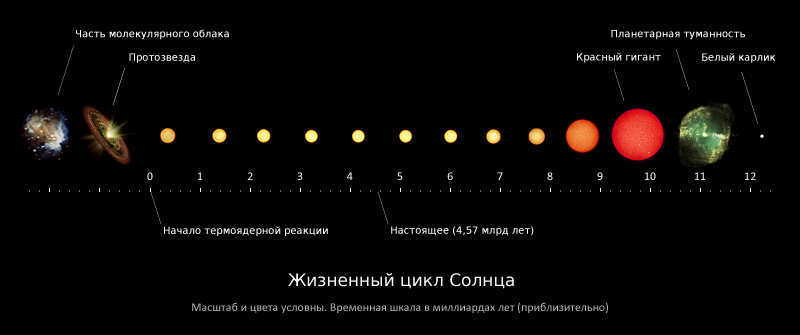
In order to gain insight into the fascinating world of space, we reached out to a group of passionate students and young researchers. Among them, Alexander Sabitov, a master’s student from the Department of Theoretical Physics at P.G. Demidov Yaroslavl State University, delved into the topic of star death during his lecture series. He shed light on the final stages of a star’s life and the remarkable process of their rebirth into other celestial entities.
Supernova
In theory, it is advantageous for stars to be formed not individually, but in pairs or even triplets. There exists a protoplanetary cloud – essentially a mass of gas, which gradually starts to contract on its own. And it is beneficial for it to initially divide into fragments, as it increases the chances of their survival by compensating for each other’s rotation. Single stars similar to our Sun are actually quite uncommon objects.
Quite frequently in these binary systems, one star completes its life cycle before the other and evolves into a white dwarf. This white dwarf, like a highway robber, starts drawing matter from its neighboring star towards itself. This process is called accretion. An accretion disk forms around it. And if a sufficient amount of this matter falls onto the star, a thermonuclear reaction will ignite, causing the star to explode and resulting in a supernova eruption.
And in this instance, we have a type 1a supernova. It’s extraordinary due to its mass calibration. They are also referred to as standard cosmological candles. They excel at determining the distance to an entity. This is crucial in the field of cosmology since various techniques for measuring distance operate on different scales, and for many of these techniques, the scales are insufficient. However, with supernovae, it is possible to measure distance over a vast range, extending up to the distance between galaxies.
Now let’s delve into the topic of white dwarfs. However, let’s imagine a scenario where the star in question was initially much more massive and its evolution progressed even further. In this particular scenario, when the star begins to undergo collapse, the pressure exerted by the electron gas is insufficient to halt the process, resulting in further collapse. As a result, the star will shrink to a minuscule size of 11 kilometers (to put this into perspective, white dwarfs typically have a size comparable to that of Earth, which is roughly 1000 times larger). Interestingly, despite its diminutive size, the mass of this collapsed star will still be comparable to that of a gigantic star, equivalent to several times the mass of our very own Sun.
This particular object exhibits such a high level of compactness that its composition is primarily made up of neutrons. This unique characteristic is what gives it the name “neutron star”. Essentially, the electrons are compressed into protons, resulting in the production of neutrons. Furthermore, an interesting phenomenon occurs due to the fermionic nature of neutrons, which prevents them from getting closer and halts further collapse.
[mydoubleline]In the case of a neutron star, the density at its core surpasses that of a typical atomic nucleus. The matter found within is in such a peculiar state that it gives rise to particles that were only present during the initial stages of the Universe. Describing the nuclei of neutron stars proves to be a challenging task, as our calculations yield infinite and zero values when attempting to determine their ratio.[/mydoubleline]
Neutron stars possess an intriguing characteristic in the form of their exceptionally potent magnetic fields. Consequently, white dwarfs and neutron stars serve as unique arenas for physicists and astrophysicists to investigate conditions that are unattainable on Earth. To put it simply, on our planet, we can generate a magnetic field of 10 4 Gs, while magnetars, which are neutron stars, possess a magnetic field of 10 16 Gs. Neutron stars can be likened to immense, incredibly dense, superconducting, superfluid rotating “crystals” accompanied by an immense magnetic field. By analyzing certain indirect parameters, we can examine the behavior of particles within these stars. In the field of astrophysics, we are unable to physically interact with celestial bodies and must instead strive to comprehend how various phenomena give rise to observable effects that can be detected from Earth.
While white dwarfs can still be described using Newtonian physics, the same cannot be said for neutron stars. Neutron stars require the use of Einstein’s general theory of relativity. This is due to a parameter known as the gravitational radius, which represents the radius an object would have if it were to become a black hole. The Sun, for instance, has a gravitational radius of just a few meters. However, since the Sun’s size is much larger than this radius, Newtonian physics can still be applied. On the other hand, a neutron star has a gravitational radius of about 4 kilometers, while its actual radius is 11 kilometers. As a result, the usual physics no longer suffices for describing neutron stars.
A phenomenon of immense gravity
In the event that the initial celestial body possessed an extraordinary mass, and the process of thermonuclear fusion had reached the point of iron, then the inevitable outcome would be the collapse of the object, giving rise to a phenomenon known as a black hole. These enigmatic entities remain shrouded in mystery, as their physical nature remains concealed behind a gravitational radius. No information can escape from this point, not even light itself. Our perception of black holes is limited to observing their indirect effects, such as the distortion they cause in the motion of surrounding celestial bodies.
[mydoubleline]There are two main categories of black holes: stellar-mass black holes and supermassive black holes, which can weigh hundreds or even thousands of times the mass of our sun. Supermassive black holes are formed at the centers of galaxies, and the exact process of their formation is still unknown. In the past, they were referred to as quasars and believed to be active galactic nuclei. However, it was later discovered that they are actually massive black holes that tear apart stars and create an accretion disk that emits X-rays. Since these objects do not emit light, it appears as though the stars are orbiting in empty space.[/mydoubleline]
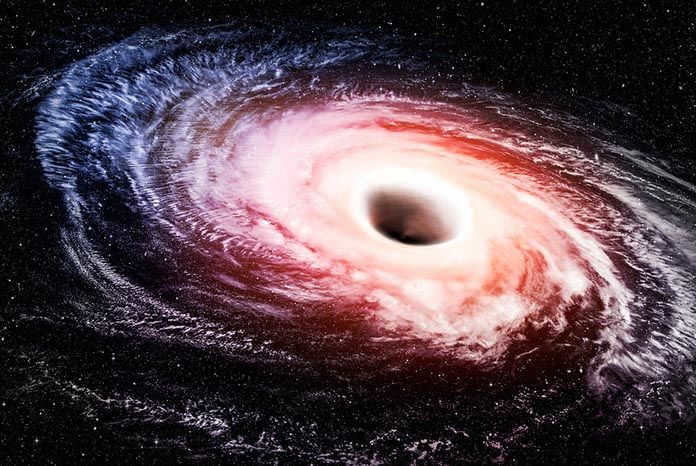
Officially, black holes have the ability to evaporate. Following the occurrence of the big bang, the initial black holes that formed were extremely minuscule in size. The operation known as the Hawking mechanism applied to these black holes, wherein particles and antiparticles can be generated at the outer edge of the black holes’ gravitational field, beyond the event horizon. These particles have the potential to escape the gravitational field. This phenomenon is referred to as the turbulence of the vacuum: in essence, the vacuum is not completely empty as particles are continuously being born and ceasing to exist within it, and this concept does not contradict any existing theories or principles.
However, if a particle is generated within the vacuum, it utilizes the energy present in the vacuum itself. Likewise, when particles are generated within a gravitational field, they utilize the energy of that gravitational field. In accordance with Einstein’s proposition that mass and energy are interchangeable, the utilization of gravitational field energy results in the depletion of the black hole’s mass. The initial black holes were relatively lightweight and consequently lost their mass rapidly, leading to the belief that they have all completely dissipated. On the other hand, larger black holes evaporate at an extremely slow rate, rendering this mechanism practically invalid for them. The issue, however, lies in the fact that we lack the means to measure all of these phenomena accurately.
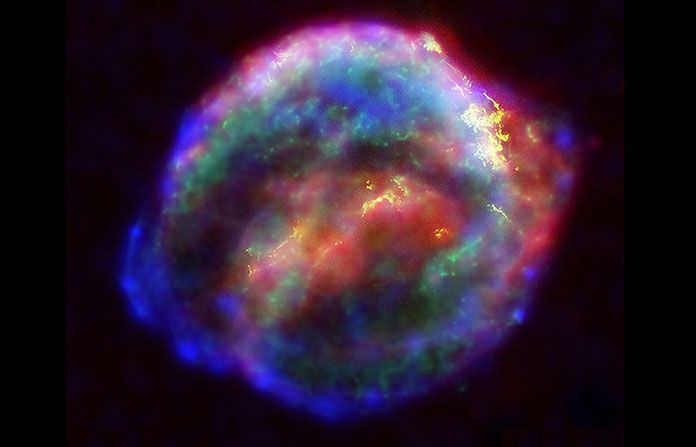
In order to learn more about the subject, we decided to reach out to a group of enthusiastic students and young researchers and ask them about their current studies. One of the speakers in our second lecture series was Alexander Sabitov, a master’s degree student from the Department of Theoretical Physics at P.G. Demidov Yaroslavl State University. During his talk, he delved into the fascinating topic of the final stages of a star’s life and how they undergo a process of rebirth after their demise, transforming into other cosmic entities.
How long does a star burn?
The mass of a star is the key factor in determining its future development. The greater the mass, the further the thermonuclear fusion reactions that sustain the star’s existence and combustion will progress, resulting in a denser core. Conversely, lighter stars experience less intense processes, allowing hydrogen to burn for a longer period of time.
Main sequence stars, which account for 95% of all stars in the universe, undergo hydrogen burning. Once hydrogen is depleted, the star transitions to thermonuclear fusion reactions involving helium and heavier elements.
If a star is sufficiently large, it can undergo reactions that lead to the creation of iron (Fe-56). Iron is the most stable element and exists as an individual element, not a subatomic particle. Once iron is formed, thermonuclear reactions cease to occur, as fusion would require more energy than it would release. Therefore, after iron is formed, it becomes more likely for the star’s nuclei to collapse.
The process of star aging
Nevertheless, the primary phase in the life cycle of a star is the hydrogen combustion, which endures for billions of years. Currently, the Sun is 4.5 billion years old, and throughout this entire time, hydrogen has been undergoing combustion, and it is expected to continue burning for a similar duration, if not longer.
Over time, the size and temperature of the Sun will increase, although this change may not be immediately noticeable to us. However, once the supply of hydrogen fuel is depleted, a distinct and significant event will occur – a global restructuring of the star. Currently, the inward pressure of matter is counterbalanced by the outward pressure of radiation, specifically the pressure exerted by light. This delicate equilibrium allows the star to maintain its stable size. It is worth mentioning that this phenomenon was initially experimentally proven by the Russian scientist P.N.Lebedev.
Over time, the balance will shift, causing the star to expand. When the hydrogen fuel runs out and helium ignites, the inner layers will contract and the outer shell will be expelled, forming a red giant. If the Sun is currently a yellow dwarf, it will eventually evolve into a red giant. It will expand to the point where its outer layer extends beyond the orbits of the inner planets, potentially reaching as far as Venus. Once helium begins to burn, a higher temperature is required, which can be achieved by increasing the pressure.
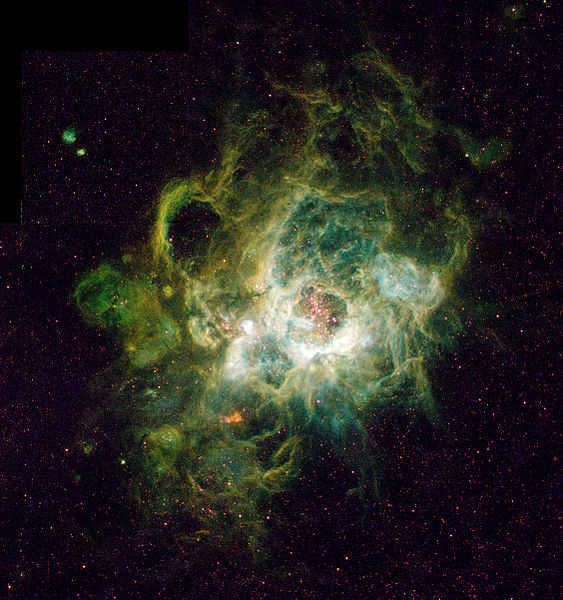
What causes a star to transform into a dwarf?
The ignition process of stars is fascinating. In the vast expanse of space, there exists a tremendous amount of matter. Occasionally, clusters of cosmic dust, known as protoplanetary clouds, experience random fluctuations that cause the dust to clump together and collapse under its own gravity, resulting in increased pressure. Over time, this pressure continues to build, reaching a critical point where the temperature rises and the star ignites in a spectacular eruption. This natural phenomenon can be compared to an event that occurred in the Middle Ages, in village forges situated on a plain surrounded by a swamp. In this scenario, blacksmiths found themselves without flint but with a supply of meteoric iron mined from the swamp. To overcome this challenge and start a fire, they placed a metal billet on an anvil and struck it with a hammer. The energy from the impact heated the billet, allowing it to be used to ignite something that could smolder. This ingenious method, devoid of silicon, mirrors the process by which stars are ignited.
In order for the star to transition from burning hydrogen to burning helium and beyond, the core must undergo an increase in density. However, in the case of this particular star, it is not sufficiently massive for iron combustion to occur. As a result, the star exhausts all of its fuel and the outward release of energy ceases. Consequently, the star begins to contract and its outer layers are expelled. If the star’s mass is less than 1.4 solar masses, it will become a white dwarf. Despite the cessation of fusion, the star is prevented from further contraction due to quantum effects, specifically the outward pressure exerted by the electron gas. This leads to a significant increase in density, with the core’s matter density comparable to that of atomic nuclei. Consequently, the star’s size, which was previously around 100 Earth radii, will shrink to the size of the Earth or even smaller. There are white dwarfs with radii of 4000 kilometers, 3000 kilometers, and even 800 kilometers, whereas the Earth’s radius is 6300 kilometers.
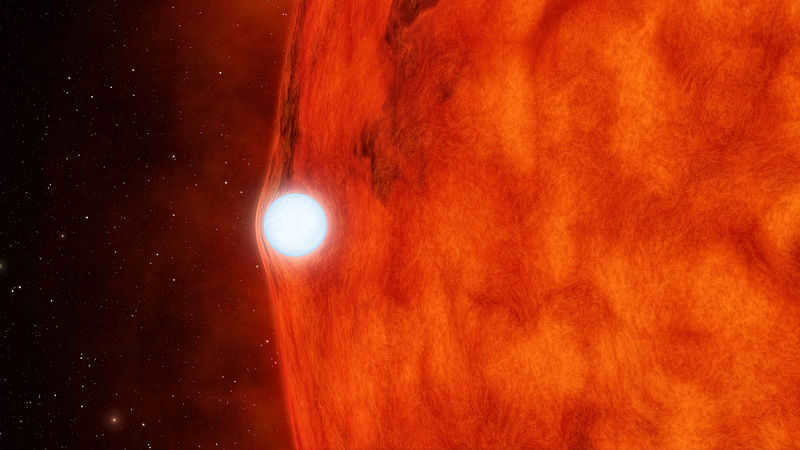
Continual stellar retirement
Photons, the particles responsible for carrying light, can only be emitted from the surface of stars. It can take up to 1000 years for photons to travel from the core to the surface. Ordinary stars primarily produce photons, which is why they appear bright. In contrast, white dwarfs emit fewer photons, resulting in their dimness. The white dwarf stage begins when the production of neutrinos in pre-white dwarfs ceases.
The cooling process of white dwarfs is extremely lengthy and can be considered almost eternal. This is due to the limited number of photons present in white dwarfs, which are only emitted from the surface. It can take billions and billions of years for white dwarfs to cool down. Eventually, they will reach a point where they become so dim that they are referred to as black dwarfs and can no longer be observed.
The concept of stellar demise is truly fascinating, as it involves the accumulation and transformation of the outer layers of stars into planetary nebulae. The interconnectedness between stars and planets is evident in this process.
The birth of stars can be attributed to the condensation of matter found in clouds and the dispersion of dust particles throughout galaxies. A notable example of a star formed in this way is the Orion Nebula.
The formation of a star is also influenced by the force of gravity. While gas and dust are the basic components, occasionally disturbances can lead to the creation of dense regions within these clouds, which then collapse under the pull of gravity and give rise to what is known as a protostar. However, observing the death of a star is an impossible task. The stars visible to the naked eye are located approximately 4,000 light years away from us. Stars with greater brightness and mass, as well as heavier elements in their core, are prone to dying in spectacular supernova explosions. It’s important to note that not every collapse or explosion results in a supernova event. Some stars simply decay and transform into gas and dust, while others trigger supernovae. On average, a supernova occurs once every 50 years. The mass of the star plays a significant role in determining its fate.
Are you aware that thanks to the Hubble Space Telescope, we have the ability to observe the planets, stars, and dense matter surrounding our planet? The Hubble telescope is capable of capturing images in full color.
What causes stars to die and how do they come into existence?
Various factors contribute to the creation of a star. From this vantage point, the life cycle of a star can be considered quite straightforward. A star is formed when the dust and gas that exist in the Universe are impacted by gravity, causing them to collapse due to gravitational forces. On the other hand, stars meet their demise when they deplete their core’s fuel supply.
The same process is responsible for the birth of a star. Over time, the star develops distinct outer layers and hot cores. Certain stars possess iron cores. They begin to accumulate more gas, dust, and energy from the surrounding universe. As the process continues, the star becomes a repository for a variety of metals and maintains a hydrogen fuel source throughout its lifespan. Once the hydrogen fuel is depleted, the star’s life cycle comes to an end. The formation of stars is a straightforward concept. If a small amount of gas collapses under the influence of gravity, a small star is born. If a larger amount of gas is involved, a larger star is formed. One of the most well-known stars is our very own Sun. The Sun was created from a medium-sized gas cloud. As time passed, gravity caused the star to gather more dust and fragments that were scattered throughout the universe. This is typically why stars increase in size as they age. When stars like neutron stars are in the early stages of formation, they are often shrouded in clouds, making them difficult to observe through a telescope. In such cases, infrared radiation comes to the rescue. Infrared radiation can penetrate the dust and clouds surrounding these neutron stars, making them more easily detectable by scientists. Returning to massive stars, the Sun is not classified as a massive star, but rather a medium-sized star that has been shining for 5 billion years. The Sun is expected to burn for another 5 billion years. When the Sun’s time comes to an end, it will expand into a red giant and leave behind a small white dwarf. This white dwarf will be approximately the size of the Earth. When massive stars, which are about 10 times larger than the Sun, reach the end of their lives, they transform into red giants due to their excessive mass. These massive stars are incredibly dense and continue to burn their fuel. As massive stars consume their nuclear fuel at an accelerated rate, they also burn out more quickly than the surrounding planets in the solar system.
What is the name given to the demise of a star?
A star’s demise is referred to as a planetary nebula. Stars contain dust and clouds, and as they consume their fuel, such as hydrogen, they deplete it and ultimately meet their end in the vastness of space.
If a star were to live for approximately 5 billion years and come to the end of its life cycle, we would not be immediately aware of its demise. This is due to the fact that the star is located millions of light years away from us, which has a significant impact on our ability to observe and comprehend the star’s death. It would take approximately 18 billion years for us to become aware of its ultimate fate. Stars possess a multitude of elements, such as helium, carbon, and oxygen, within their cores, and they possess a substantial amount of mass. The core of a star is typically hotter and emits a greater amount of energy. However, for a star to transform into a black hole during its demise, it must be of immense size. A star that is eight times the size and mass of the Sun has the potential to become a black hole due to the presence of numerous heavier elements within its core.
What occurs when a star reaches the end of its life?
The demise of stars is a breathtaking and astonishing phenomenon in numerous aspects. Contrary to popular misconceptions, stars do not transform into black holes upon their demise on every occasion. Instead, stars deplete their nuclear fuel, like hydrogen, and commence emitting energy and elements, such as helium, carbon, and iron. During this phase, the star is referred to as a planetary nebula. If a star similar to the sun reaches the end of its life, it will expand and transform into a red giant before ultimately exploding.
What sets apart the demise of a colossal star from that of smaller stars?
The demise of a star is referred to as a planetary nebula. When stars perish, they often leave behind white dwarfs.
In the event a massive star, eight times the size of the Sun, meets its end in the vacuum of space, its mass, helium, hydrogen, and oxygen can coalesce into a black hole. Conversely, a diminutive neutron star simply leaves behind a white dwarf. Elements that were not utilized in fusion start to be released from the red giant, signaling the culmination of its life. In the case of a star with less mass, it transforms into a white dwarf upon its demise. Many stars meet their end and become white dwarfs due to their relatively small mass and a core that is not rich in elements.
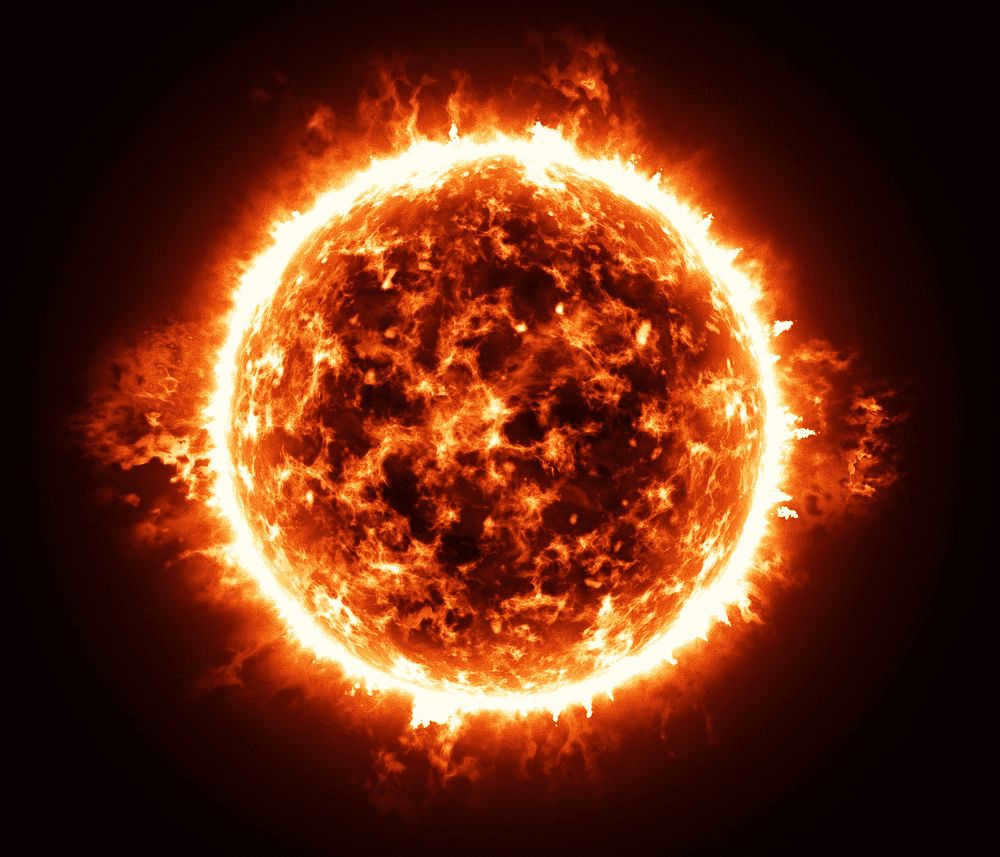
Indeed, stars have the ability to transform into planets. Nevertheless, this phenomenon occurs exclusively among a specific group of stars known as brown dwarfs.
Have you ever gazed at the stars on a clear night? It provokes contemplation on numerous topics, and occasionally it may even prompt a peculiar query, such as whether stars can undergo a metamorphosis into planets. However, prior to delving into the response to this inquiry, we must acquire some knowledge about stars and planets.
What is the fate of stars when they reach the end of their lives?
Let’s consider our own sun as an example. The sun belongs to a group of stars known as main sequence stars. These stars sustain themselves by undergoing nuclear fusion, where hydrogen is converted into helium within their cores. This fusion process releases both heat and light. The energy released from this fusion also counteracts the force of gravity, preventing the star from collapsing inwards. Typically, stars remain in this phase for approximately ten billion years.
The star’s core has a limited amount of hydrogen. Once all the hydrogen in the core is depleted, the nuclear fusion reaction in the core ceases. The core then begins to contract and the temperature increases. As the core heats up, the outer layers of the star are shed. This leads to the expansion of the star and the cooling of its outer layers, resulting in a reddish glow. The star is now referred to as a red giant..
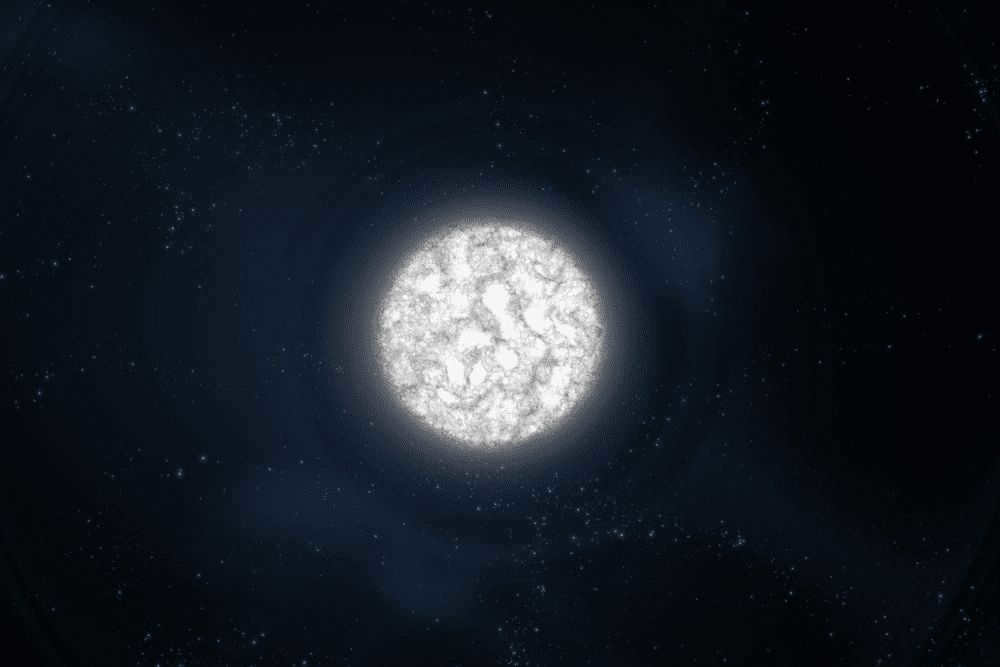
If a star has a mass 1.4 times greater than our sun, it will undergo the collapse of its first core followed by a massive explosion known as a supernova. The energy released during a supernova is so immense that it can outshine an entire galaxy for a period of weeks. The aftermath of such an explosion results in the formation of either a neutron star or a black hole.
What is the process of planet formation?
During the formation of a star, a disk of gas, dust, and debris often forms around it. These dust particles serve as the building blocks for the creation of rocky planets. Due to the influence of gravity and other forces, these particles collide with one another. When the collision is gentle, the particles stick together, leading to a continuous process of growth. As this process continues, rocks with a slightly greater mass are formed, allowing them to attract even more particles through gravitational attraction. Through these various processes, small celestial bodies known as planetesimals are formed. These planetesimals, akin to small particles, undergo collisions and mergers to eventually give rise to fully formed planets.
When a planetesimal is situated far away from its star, it undergoes a transformation where its core freezes and transforms into a gaseous planet. This phenomenon occurs because there is a substantial presence of hydrogen and helium compounds in these particular regions. As the planetesimal grows, its gravitational force intensifies, causing it to draw in any nearby substances. In the scenario of a remote planetesimal, the surrounding materials happen to be gases.
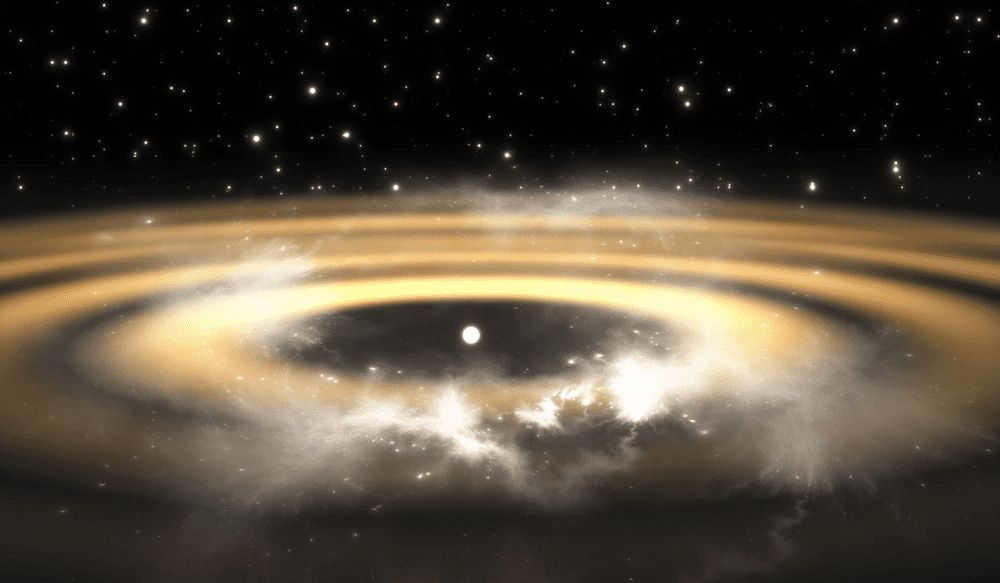
Based on this data, we can infer that when a star perishes, the residual matter is repurposed to generate fresh stars and planets. However, the query arises: is it possible for a star to directly transform into a planet?
The response to this inquiry is, indeed! A star has the capability to metamorphose into a planet, yet this phenomenon is exclusive to a specific group of stars known as brown dwarfs.
What do we mean by brown dwarfs?
Brown dwarfs are commonly referred to as unsuccessful stars. They are entities that are too small to be considered stars, but too large to be classified as planets. They possess characteristics that are a blend of both stars and planets. Their sizes vary from being twice the mass of Jupiter to 90 times the mass of Jupiter. Similar to regular stars, they typically occupy the center of their respective solar systems, with planets revolving around them. However, they lack the necessary gravitational force to sustain the process of hydrogen nuclear fusion.
While a brown dwarf is unable to sustain hydrogen fusion, it is capable of supporting nuclear fusion of heavy hydrogen (deuterium). Consequently, during the initial stages of its existence, it obtains energy from this process and emits heat and light similar to that of a typical star. However, deuterium is present in limited quantities throughout the universe. As a result, the brown dwarf rapidly exhausts its deuterium fuel. Subsequently, all fusion reactions come to a halt, causing the brown dwarf to cease emitting heat and light entirely. It gradually loses brightness, cools down, and takes on the characteristics of a planet. The outcome is a system of planets orbiting a massive central planet.
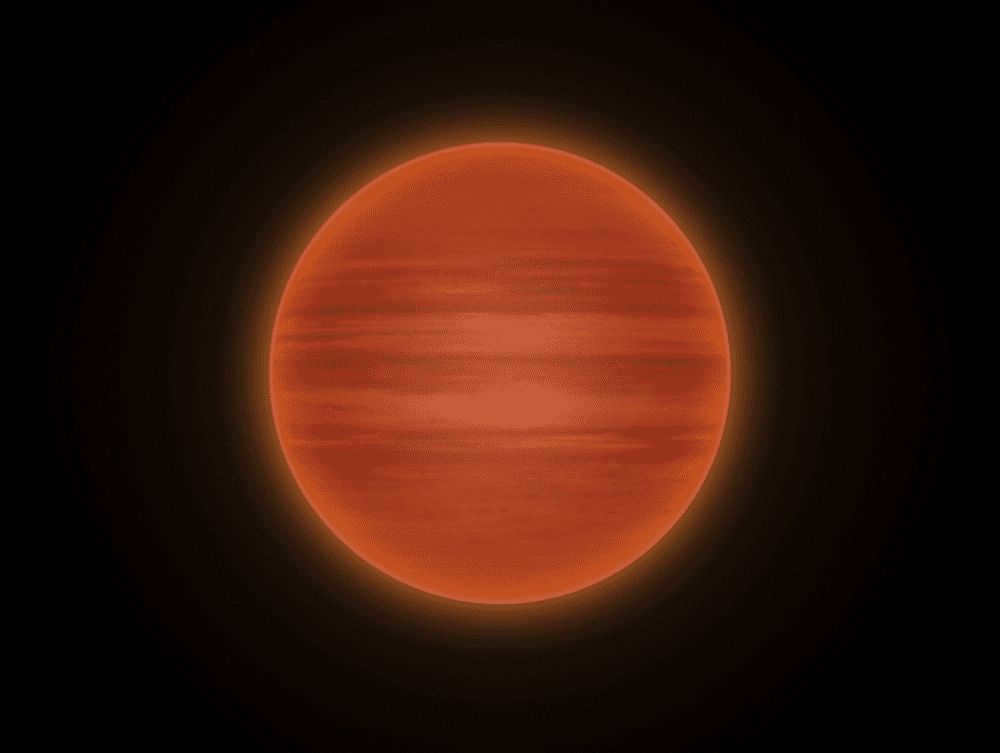
So far, the count of discovered brown dwarfs is approximately 3,000. This figure remains low due to the fact that brown dwarfs cease to emit light at an early stage of their existence. For the majority of their lifespan, they remain cold and dark, which makes them challenging to identify using conventional telescopes. It is theorized that the number of brown dwarfs in the universe might be comparable to the number of regular stars. Furthermore, brown dwarfs could potentially play a minor yet significant role in the enigmatic nature of dark matter!
After several billion years since its formation, a star undergoes its demise. The process of a star’s death spans another few billion years. At present, our Sun finds itself in the midst of its life cycle and, based on scientists’ calculations, will expire in 5 billion years.
NGC 2818 is an exquisite planetary nebula, an envelope of gas surrounding a dying star similar to our Sun. Presumably, our Sun will undergo a similar fate in 5 billion years, as it exhausts its hydrogen and helium fuel for thermonuclear reactions. Photo: NASA, ESA, Hubble Heritage Team,STScI / AURA
Stages of stellar demise for Sun-sized stars
1. The core experiences thermonuclear reactions, transforming hydrogen and causing compression and heating.
2. The outer shells expand, leading to the star becoming a red giant.
3. Thermonuclear reactions in the core synthesize helium into carbon.
4. Once the helium reserves are depleted, the core cools and expands.
5. A nebula forms around the dying star as it ejects gaseous material.
The process of stellar death for stars that are larger than our Sun can be divided into several stages.
The initial three stages are similar to those observed in stars of the same magnitude as our Sun. However, there are some distinct events that occur after these initial stages.
A star resembling the Sun is nearing the end of its life cycle. The information displayed in this picture, which is a combination of two images taken by the Hubble Space Telescope, indicates that when a star enters the red giant phase, it gradually sheds its outer atmosphere and forms a spherical shell that lacks distinct features. As the process continues, material is expelled in dense clumps, creating dust clouds in the inner regions that are illuminated. The ejection process as a whole is exceptionally rapid, taking only a few thousand years in comparison to the lifespan of stars similar to our sun, which is 10 billion years. Ultimately, the star is left with a hot core – a white dwarf, visible in the photo as a white dot at the center of the nebula. Photo: NASA, H. Bond/STScl
The Keyhole Nebula, also known as NGC 3324, gets its name from its unique shape. It is situated within the Eta Carinae Nebula and was created by the dying star Eta Carinae, which has experienced numerous outbursts due to its unstable condition in recent centuries. Image credit: NOAO, NSF, AURA
Egor Morozov January 22, 2021 – 2:25 pm
Stars originate from vast clouds of gas and dust, which condense under the force of gravity until the internal temperature becomes sufficient to trigger nuclear fusion of hydrogen. Once this process begins, the star embarks on a journey towards its demise. Despite the massive gravitational pull attempting to compress it into a minuscule point, the energy released from fusion pushes outward, establishing a delicate balance that can endure for millions, billions, or even trillions of years.
Typically, a red dwarf star will sustain the burning of hydrogen in its core for an astonishing number of trillions of years. These stars have the potential to witness the birth and death of our own Sun and may even witness the ultimate fate of the Universe, when all sources of illumination have faded away, leaving the cosmos in eternal darkness.
Red dwarfs are small stars that can be identified by the significant reduction in their brightness caused by the presence of nearby planets – a potential method for discovering exoplanets.
As these diminutive stars age, they gradually increase in brightness and temperature until they eventually fade away, transforming into inert, lackluster masses composed of helium and hydrogen that simply exist in the vastness of the universe. Their destiny is undeniably unenviable, yet their existence is peaceful and predictable.
Now, let us shift our focus to the opposite end of the stellar spectrum, where we encounter young and massive giants and supergiants, with blue and red being the most common varieties. The lives of these colossal stars, which can be tens of times more massive than our Sun, are characterized by turbulence: due to their immense mass, fusion reactions within their cores must be incredibly active in order to maintain a delicate equilibrium against the force of gravity.
Due to their significantly greater mass compared to other red dwarfs, these stars have a considerably shorter lifespan, lasting only a few million years. This duration is astonishingly short even when compared to Earth’s timeline: the extinction of the dinosaurs on our planet could be surpassed by a mere twelve generations of blue giants in the Universe.
Gamma Orion, Algol B, the Sun, and the planets are all examples of different types of stars.
However, their relatively short lifespans have a significant impact on the universe as a whole. These massive stars have the ability to undergo fusion reactions not only with hydrogen, but also with helium, carbon, oxygen, magnesium, and silicon. As a result, they play a crucial role in the creation of elements found in the periodic table.
The demise of these colossal stars is as grandiose as their existence. Once they have accumulated enough heavy elements to form an iron core, the process of synthesis halts and the celebration comes to an end. With no other means to counteract gravity, all the matter surrounding the core is compressed into it. However, the fusion of iron does not yield sufficient energy to oppose this process. Gradually, the nucleus is compressed to an extraordinary density, compelling electrons to merge with protons, transforming the entire nucleus into a colossal mass of neutrons.
This neutron mass manages to resist the crushing forces of gravity for a period of time, but eventually succumbs, resulting in a tremendous supernova explosion. To grasp the magnitude: in just one week, a supernova can unleash more energy than our Sun has emitted over the course of its 10 billion-year lifespan.
A magnificent event unfolds in the nearby galaxy M82 with the explosion of a supernova.
This extraordinary occurrence is one of the most awe-inspiring displays in the entire cosmos. Previous supernovae that erupted in the Milky Way captivated observers for weeks, even when the sun was shining brightly. Furthermore, supernovae that burst forth in neighboring galaxies often outshine their surroundings.
However astonishing it may seem, these cataclysmic explosions are actually life-giving. Within them, the entire periodic table is synthesized and then dispersed across the galaxy by a powerful shockwave. Consequently, new gas-dust clouds are formed, giving rise to the birth of fresh stars and planets. This wondrous cycle then repeats itself.
However, what occurs to the remnants of the supergiants themselves? They have limited options: if their mass is relatively low, they transform into incredibly condensed neutrons – neutron stars with colossal density. If the mass is adequate, a fresh black hole is created.
The most unfavorable destiny befalls medium-sized stars such as our Sun. They are too substantial to fade away peacefully and too insignificant to trigger a supernova outburst. Instead, they morph into dreadful beasts that invert themselves prior to their demise.
The issue for the majority of stars (which make up over 90% of the universe) is that when a ball of oxygen and carbon begins to develop in the core, there is insufficient mass surrounding it to transform it into an iron core. Consequently, it continues to expand, growing hotter with each passing day. In response to this intense heat in the core, the remainder of the star expands and transforms into a red giant. When our Sun enters this stage, it may extend to the Earth’s orbit, ultimately concluding its existence.
The red giant phase is highly unstable, and stars like our Sun will undergo cycles of inflation, collapse, and reinflation. Each cycle produces solar winds that carry some of the material into the solar system. Eventually, the medium-sized star will burst during its final expansion, creating a hot planetary nebula that surrounds the exposed core of carbon and oxygen at the center. These remnants of stars are known as white dwarfs.
Following this, the white dwarf continues to illuminate the planetary nebula for a period of time before it cools down too much to produce such light displays. While planetary nebulae may appear beautiful through a telescope, they are actually the result of a star’s painful demise.
We reside in a youthful Universe abundant with youthful stars. Every single one of them will experience various phases of stellar development – igniting hydrogen in their cores and detonating or gradually losing heat. When the cosmos is a thousandfold older than its current age, formerly luminous luminaries will give way to enigmatic black dwarfs or black holes, and certain stars will simply disperse into the expansive cosmic emptiness.

If a sufficient amount of matter accumulates in any given location in the Universe, it undergoes compression and forms a dense mass that triggers a thermonuclear reaction. This is the process by which stars are born. The very first star appeared in the vast darkness of the early Universe approximately 13.7 billion (13.7*10 9 ) years ago, while our Sun emerged a mere 4.5 billion years ago. The lifespan of a star and the events that unfold during its final stages are contingent upon its mass.
While the process of converting hydrogen into helium through thermonuclear reactions persists within a star, it remains in the main sequence. The duration of a star’s presence in the main sequence relies on its mass: the most massive stars rapidly progress to the red giant phase and subsequently depart from the main sequence due to a supernova explosion or the creation of a white dwarf.
The destiny of colossal beings
The most enormous and immensely huge stars consume their fuel rapidly and burst into supernovae. Following a supernova explosion, a neutron star or black hole remains, and surrounding them is the substance propelled by the immense energy of the explosion, which subsequently transforms into the building blocks for fresh stars. Among our closest celestial companions, one such destiny awaits Betelgeuse, although its timing of explosion is incalculable.

A nebula is created through the expulsion of material from a supernova detonation. Positioned in the heart of this nebula is a neutron star.
A neutron star is an awe-inspiring celestial occurrence. The core of a star that has undergone a catastrophic explosion undergoes extreme compression – similar to the compression of gas within an internal combustion engine, albeit on a much larger and more efficient scale: a massive sphere spanning hundreds of thousands of kilometers is compressed into a sphere measuring a mere 10 to 20 kilometers in diameter. The intensity of this compression is so immense that electrons collapse onto atomic nuclei, resulting in the formation of neutrons – hence the name.

The compression of matter in this phenomenon leads to a remarkable increase in density, amounting to approximately 15 orders of magnitude. Consequently, the temperature at the core of the neutron star reaches an unimaginable 10^12 K, while at the periphery it is still a scorching 1,000,000 K. A portion of the immense energy generated is emitted as photon radiation, while another portion is carried away by neutrinos that are formed within the core of the neutron star. However, even with highly efficient neutrino cooling, the process of cooling down a neutron star is extremely slow, taking anywhere from 10^16 to 10^22 years for the energy to be completely dissipated. Speculating about what remains in the place of a cooled neutron star is a challenging task, as it is currently impossible to observe due to the relative youth of our universe. One theory suggests that a black hole may form in place of the cooled star.

The formation of black holes occurs due to the gravitational collapse of extremely massive entities, such as those found in supernova explosions. It is possible that in countless trillions of years, neutron stars that have cooled down will eventually transform into black holes.
The destiny of stars of moderate size
Smaller stars, unlike their larger counterparts, have a longer lifespan while they are on the main sequence. However, once they move beyond this stage, their demise is much swifter compared to their neutron star counterparts. The vast majority of stars in the cosmos, more than 99%, will never undergo a cataclysmic explosion to transform into either black holes or neutron stars. This is because their cores are too diminutive to support such cosmic spectacles. Instead, stars of intermediate mass evolve into red giants in the final phase of their existence. Depending on their mass, they can either transition into white dwarfs, undergo an explosive event, disperse entirely, or transform into neutron stars.
Currently, there are no black dwarfs present in the universe. Even the most ancient cooling stars have only lost a maximum of 0.2% of their energy. For example, a white dwarf with a temperature of 20,000 K would cool down to 19,960 K.
Regarding the smallest stars
Scientists have limited knowledge about the cooling process of the smallest stars, such as our closest neighbor, the red dwarf Proxima Centauri, compared to their understanding of supernovae and black dwarfs. The thermonuclear fusion in their cores occurs at a slow rate, and they remain on the main sequence for a longer duration compared to other stars. Some calculations suggest that they could remain in this stage for up to 10^12 years. Afterward, they are expected to transition into white dwarfs and continue to emit light for another 10^14 – 10^15 years before eventually becoming black dwarfs.
What will happen to our Sun? How does a black hole form, and what is a protostar? All of these questions can be answered by studying the evolutionary process of stars.
Astrophysics has made significant progress in the study of the evolution of stars. Theoretical models are supported by reliable observations, and while there may be some gaps, we have a comprehensive understanding of the life cycle of a star.
Formation
The process begins with the presence of a molecular cloud. These vast regions of interstellar gas are sufficiently dense for hydrogen molecules to form within them.
Then, a significant event occurs. This event can be triggered by a shock wave from a nearby supernova explosion or through natural dynamics within the molecular cloud. Regardless, the result is the same – gravitational instability leads to the emergence of a central point of gravity within the cloud.
By succumbing to the pull of gravity, the surrounding matter initiates a rotational motion around this focal point and accumulates on its surface. Over time, a balanced and spherical core with increasing temperature and brightness materializes – a protostar.
As the gas-dust disk encircling the protostar continues to spin, its velocity steadily amplifies. The augmented density and mass within the disk lead to more frequent collisions among particles, further raising the temperature.
Once the temperature reaches millions of degrees, the initial thermonuclear reaction takes place at the core of the protostar. Two hydrogen nuclei surmount the Coulomb barrier and merge to form a helium nucleus. This process repeats with another two nuclei, and so on… until the chain reaction encompasses the entire region where the temperature permits the synthesis of helium through the fusion of hydrogen.
Once the fusion reactions occur, the energy quickly reaches the star’s surface, resulting in a significant enhancement of its luminosity. Consequently, if a protostar possesses sufficient mass, it transforms into a fully formed young star.
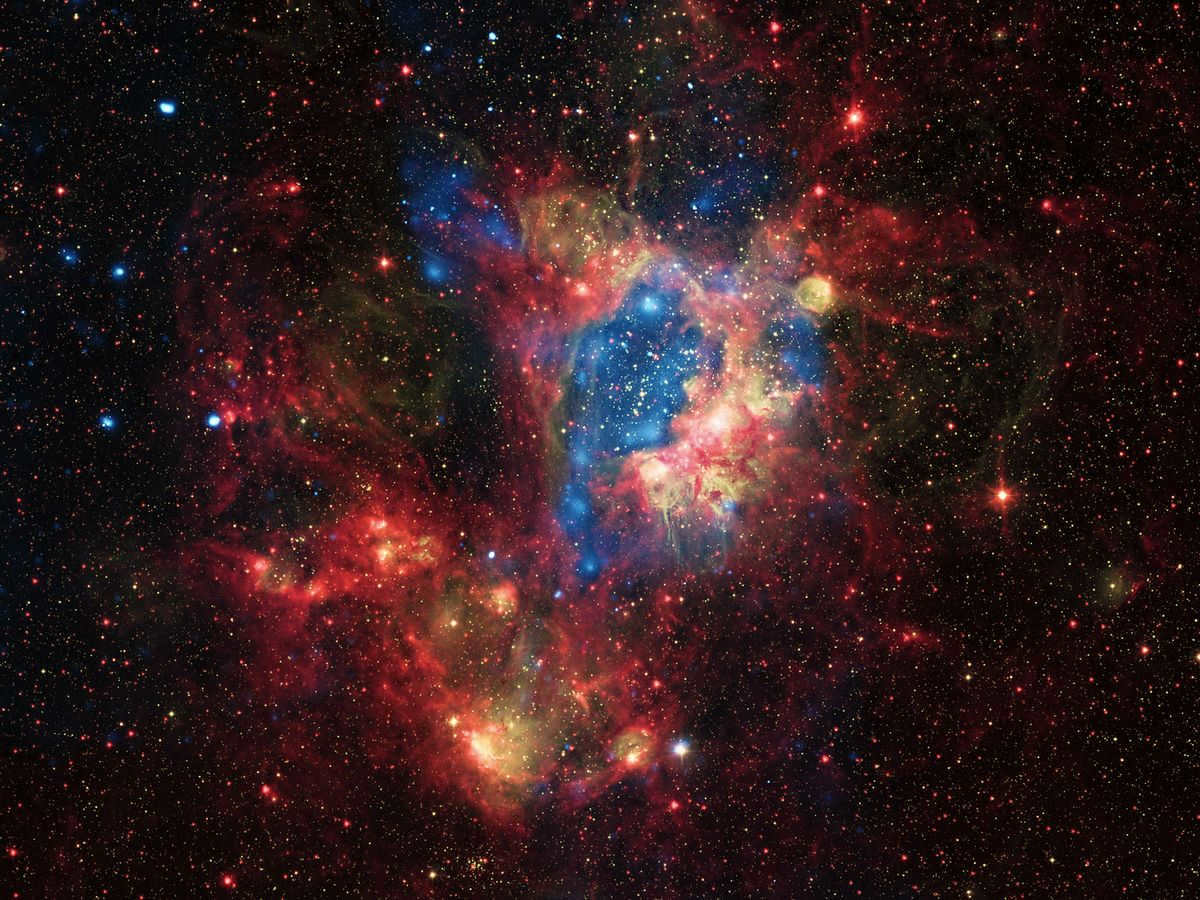
No infancy, no teenage years, no early adulthood.
All protostars that reach the necessary temperature to initiate a nuclear fusion reaction within their core then proceed into their lengthiest and most stable phase, accounting for 90% of their total lifespan.
Naturally, there can be occurrences that expedite stellar evolution, such as close proximity or even a collision with another star, but this is not contingent upon the individual star’s life cycle.
These are protostars with low mass (less than 0.0767 times the mass of the Sun), also known as brown dwarfs. Due to insufficient gravitational compression, they lose more energy than what is generated by hydrogen fusion. Over time, the thermonuclear reactions within these stars come to a halt, leaving them with nothing but an extended yet inevitable cooling process.
A rendered image of a brown dwarf / ©ESO/I. Crossfield/N. Risinger
A quiet period of maturity
The subsequent development of every individual celestial object that has completed the main sequence – the stage at which the star’s core has exhausted all its hydrogen fuel for fusion – relies entirely on the celestial object’s mass and chemical makeup.
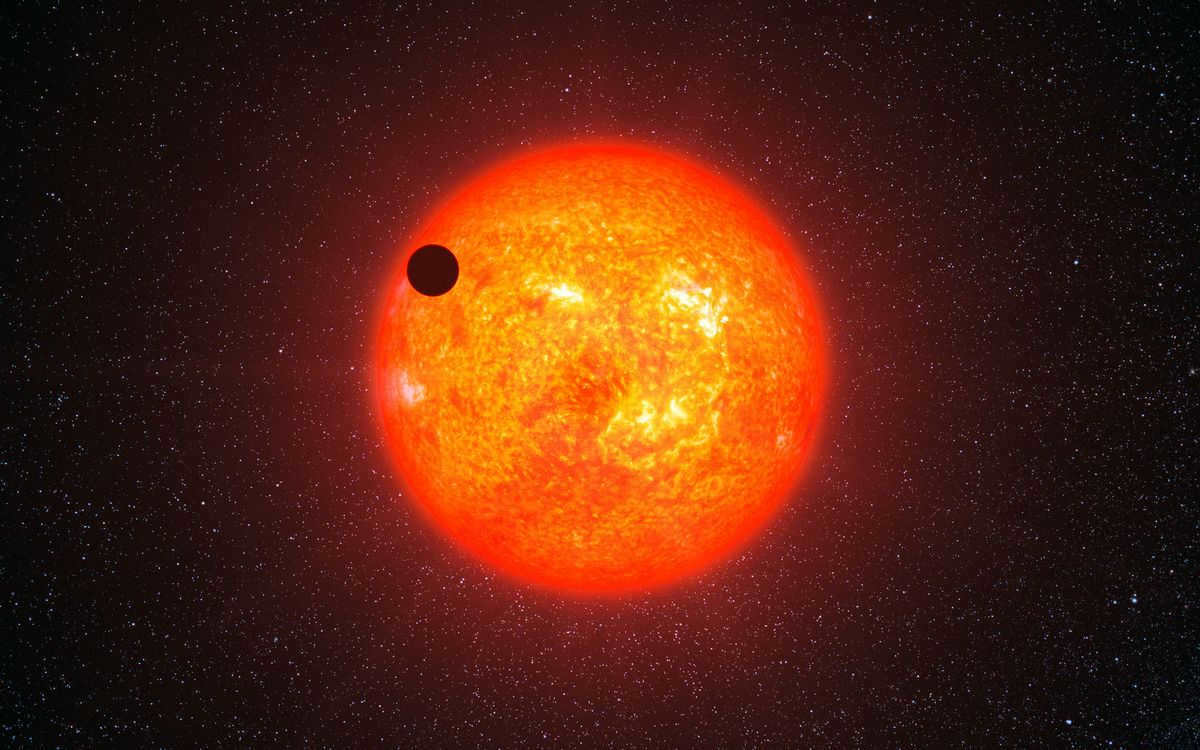
Following the main sequence, stars enter a phase known as the red giant stage. During this stage, the star undergoes various fusion reactions, starting with helium and then progressing to carbon and beyond. Each reaction leads to significant changes in the star’s structure and appearance.
This phase can be seen as a type of death throes for the star. It expands to hundreds of times its original size, turning a vibrant red color, before eventually contracting again. The star’s brightness also fluctuates, increasing by thousands of times before diminishing once more.
Eventually, the outer shell of the red giant is shed, creating a stunning planetary nebula. At the core of this nebula, a white dwarf made mostly of helium remains. This dwarf has a mass roughly half that of the sun and a radius similar to that of the Earth.
White dwarfs face a fate similar to red dwarfs – a slow burnout that can last for billions to trillions of years, unless, of course, there happens to be a neighboring star that the white dwarf can siphon mass from, thereby increasing its own mass.
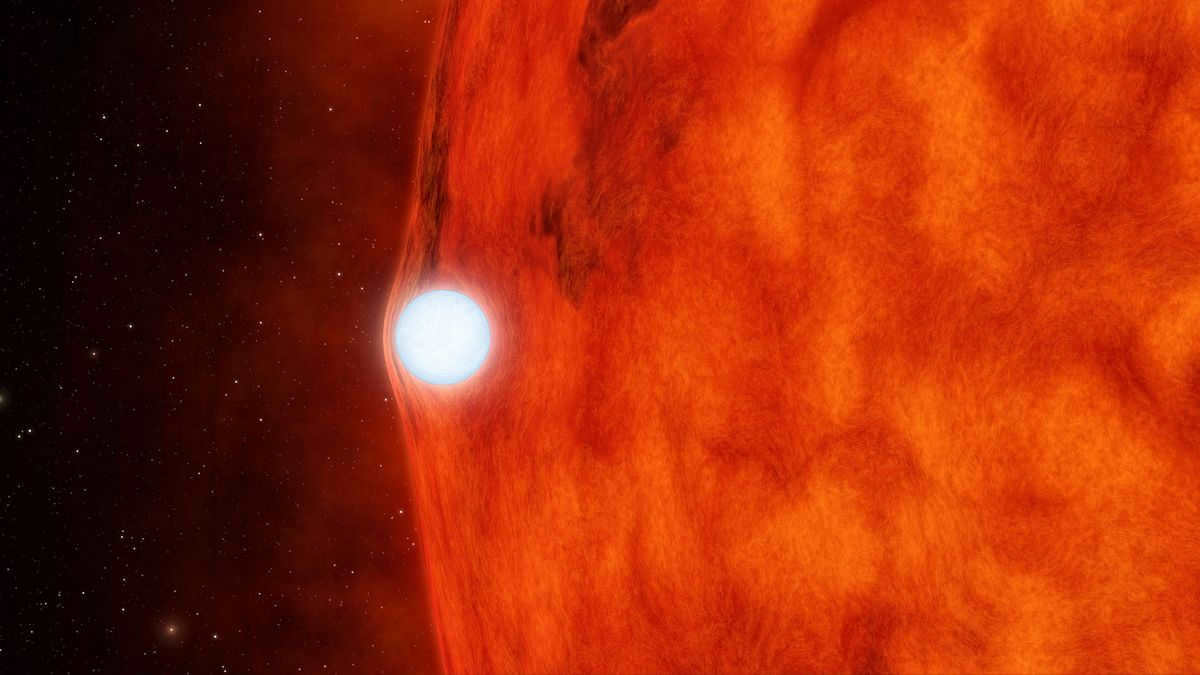
Unusual advanced age
If a star is fortunate enough to possess a mass of approximately 12 solar masses or more, the latter stages of its lifecycle are characterized by significantly more extraordinary occurrences.
If the core mass of the red giant surpasses the Chandrasekar limit of 1.44 solar masses, the star does not simply shed its outer layer during the final phase. Instead, it unleashes the accumulated energy through a powerful thermonuclear explosion known as a supernova.
Within the remnants of the supernova, stellar matter is forcefully scattered across vast distances for many light years. In this case, the remnant is no longer a white dwarf, but a super-dense neutron star with a radius of only 10-20 kilometers.
Located within the heart of the remnants left behind by a supernova lies an extraordinary phenomenon – a black hole. This awe-inspiring entity is formed when the core of the exploded star undergoes immense compression, causing even neutrons to collapse. As a result, nothing, not even light, can escape the confines of the newly formed black hole – specifically, its event horizon.
In particular, colossal stars known as blue supergiants have the potential to progress beyond the stage of red supergiants and ultimately undergo a supernova explosion.
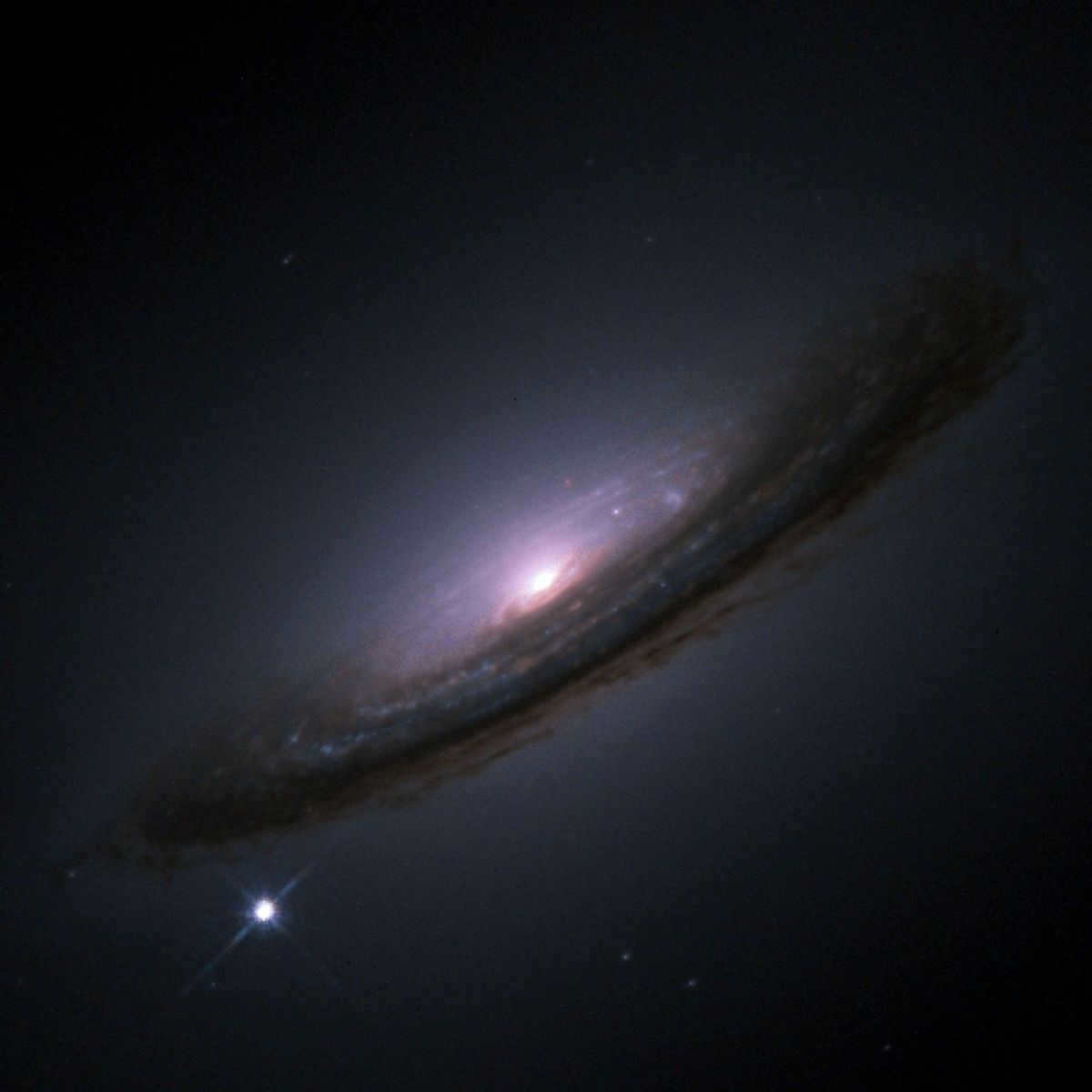
What Lies Ahead for Our Sun?
Being a star of medium mass, it is possible to speculate about the future trajectory of our Sun based on the information presented in the earlier part of this article.
However, mankind can anticipate a series of astronomical events even before the Sun transforms into a red giant. Life on Earth will become unsustainable in a billion years when the thermonuclear reactions at the Sun’s core become intense enough to evaporate the planet’s oceans. Concurrently, the conditions on Mars will improve, potentially making it a habitable place at some point.
In approximately 7 billion years, there will come a time when the Sun’s outer regions will heat up enough to initiate a thermonuclear reaction. At this point, the radius of the Sun will expand by a factor of roughly 250, and its luminosity will increase by a factor of 2700, resulting in a transformation into a red giant.
Due to the intensified solar wind, the star will lose up to one-third of its mass during this stage, but it will still have enough time to engulf Mercury.
As a result of the hydrogen burning out around the solar core, the mass of the core will increase significantly, leading to what is known as a helium flash and the commencement of thermonuclear fusion between helium nuclei, resulting in the production of carbon and oxygen. Consequently, the radius of the star will shrink considerably to about 11 times the size of the standard solar radius.
